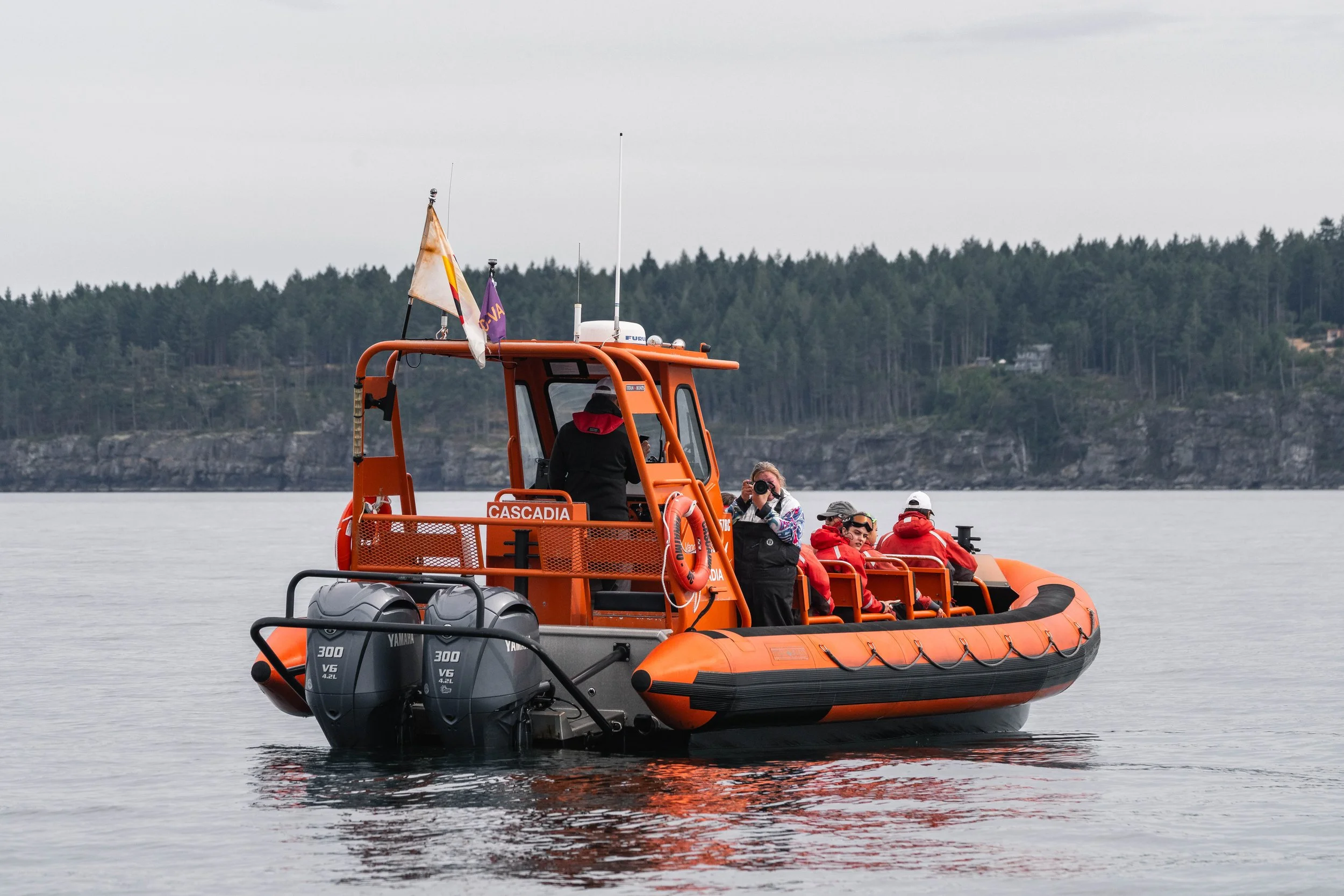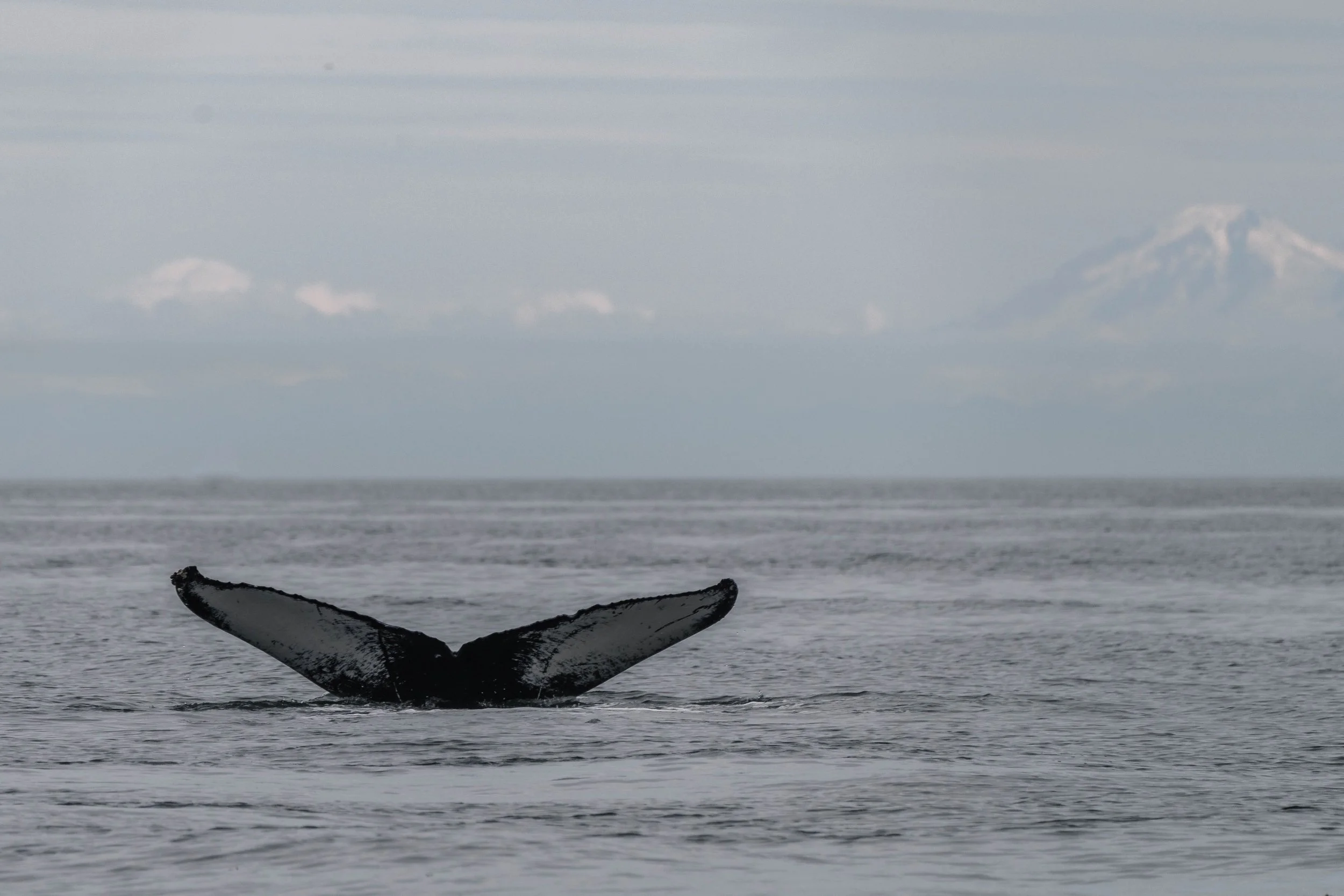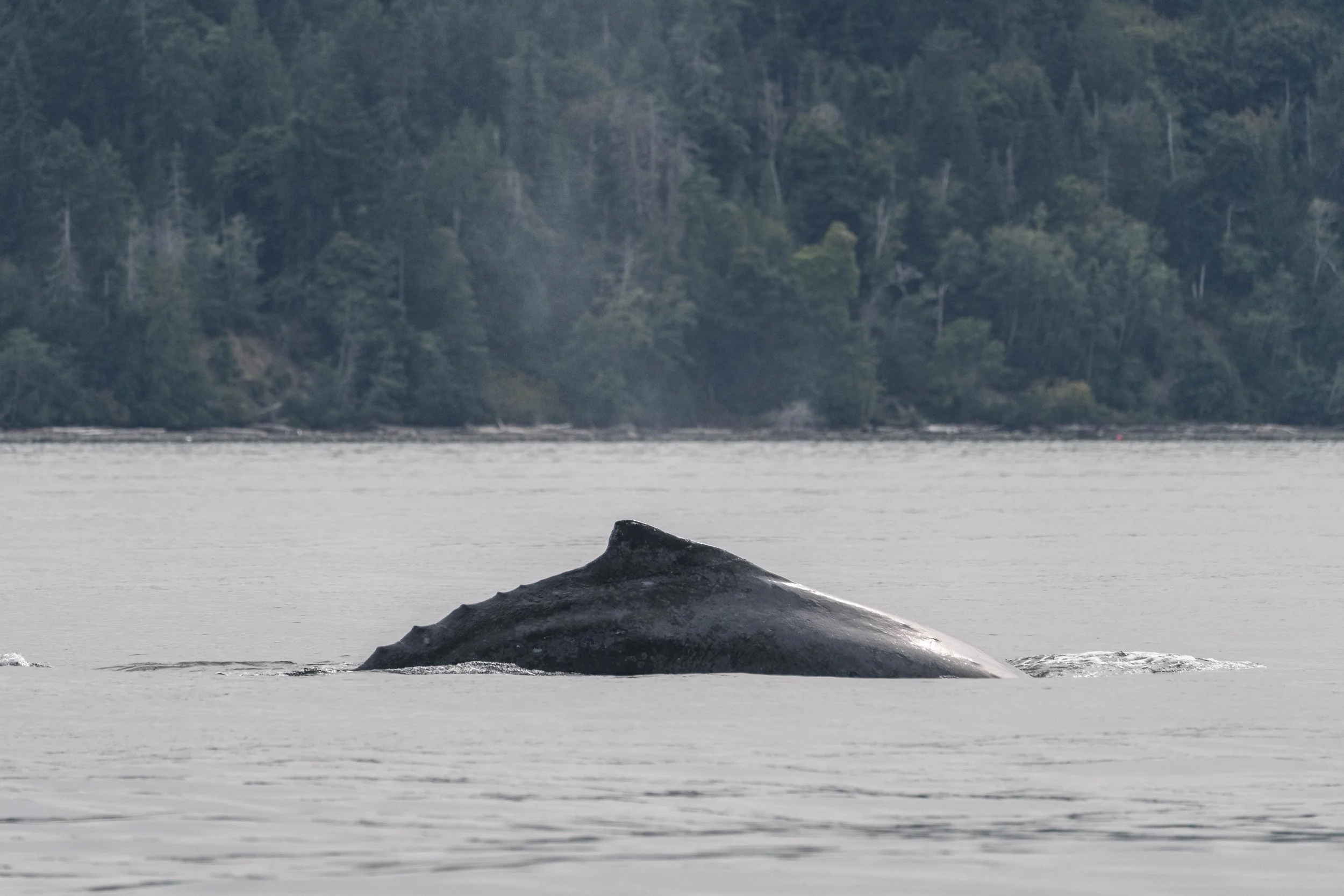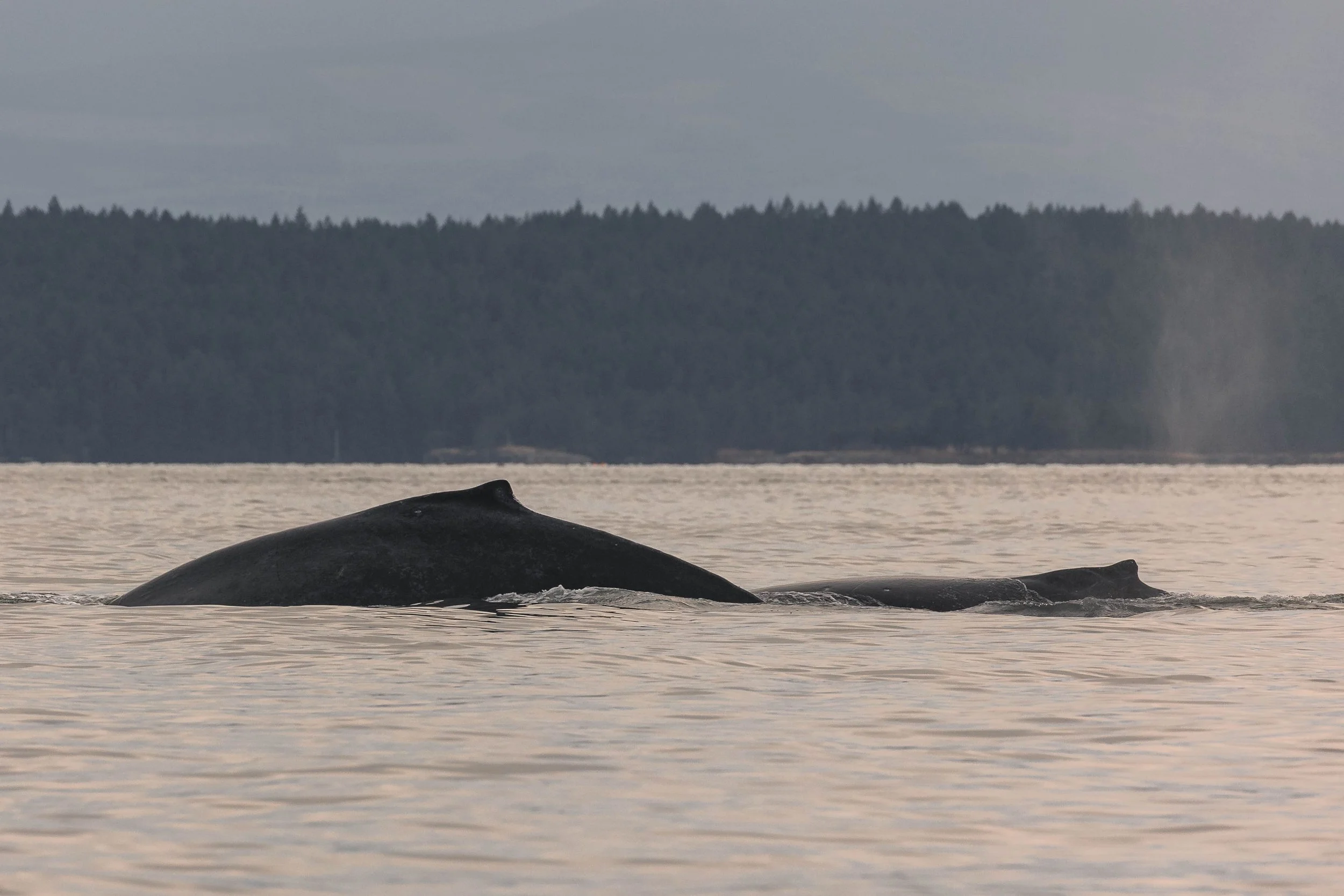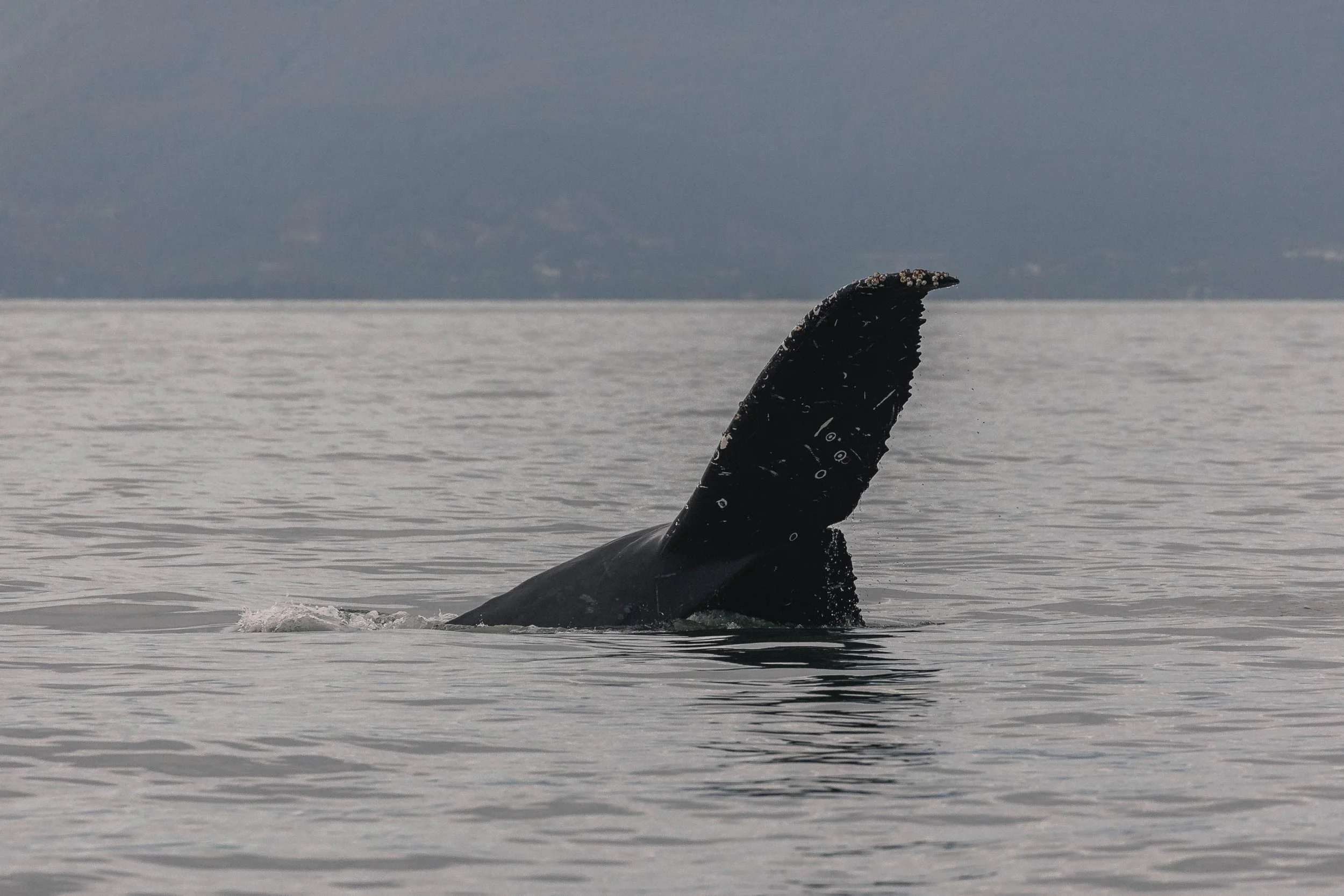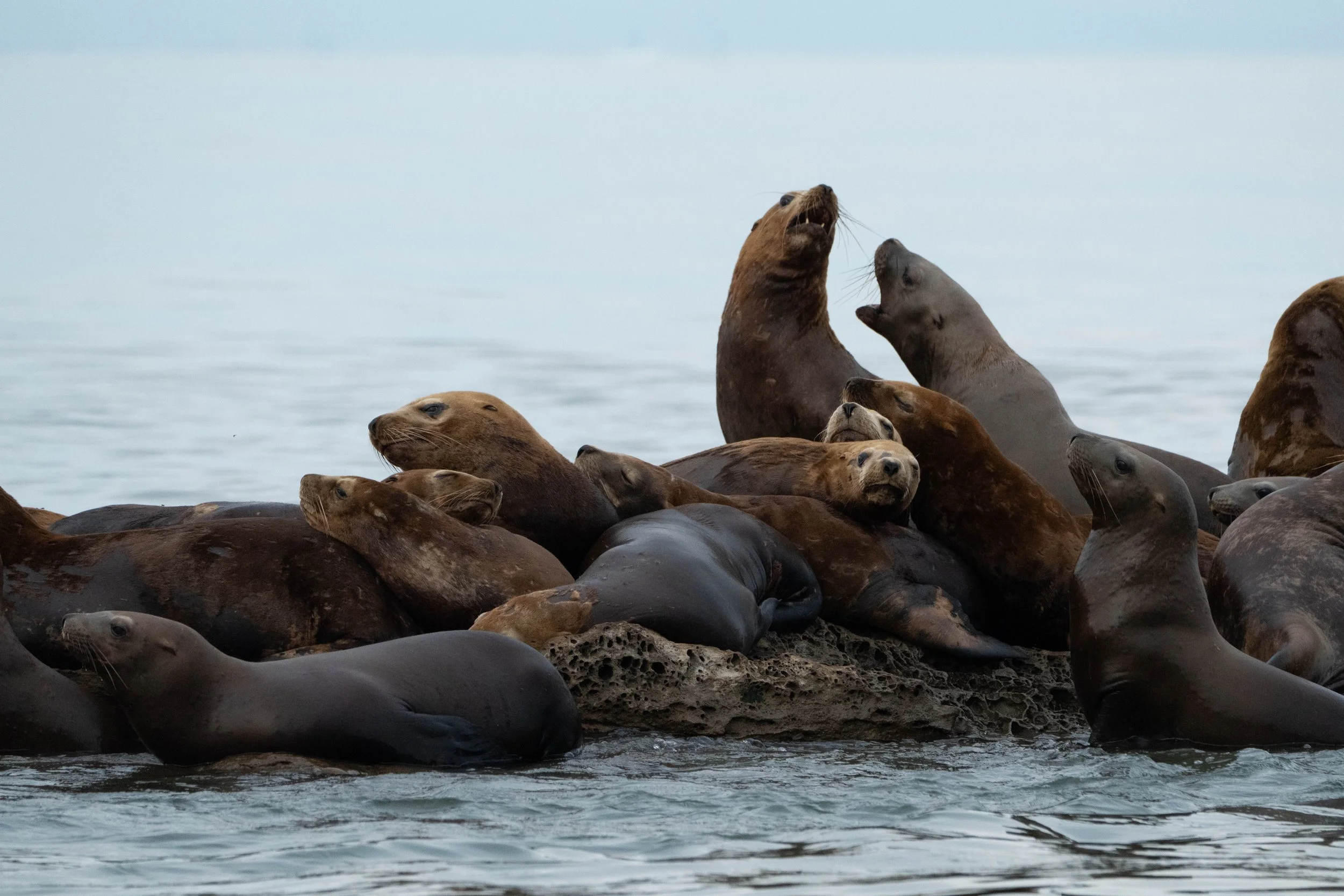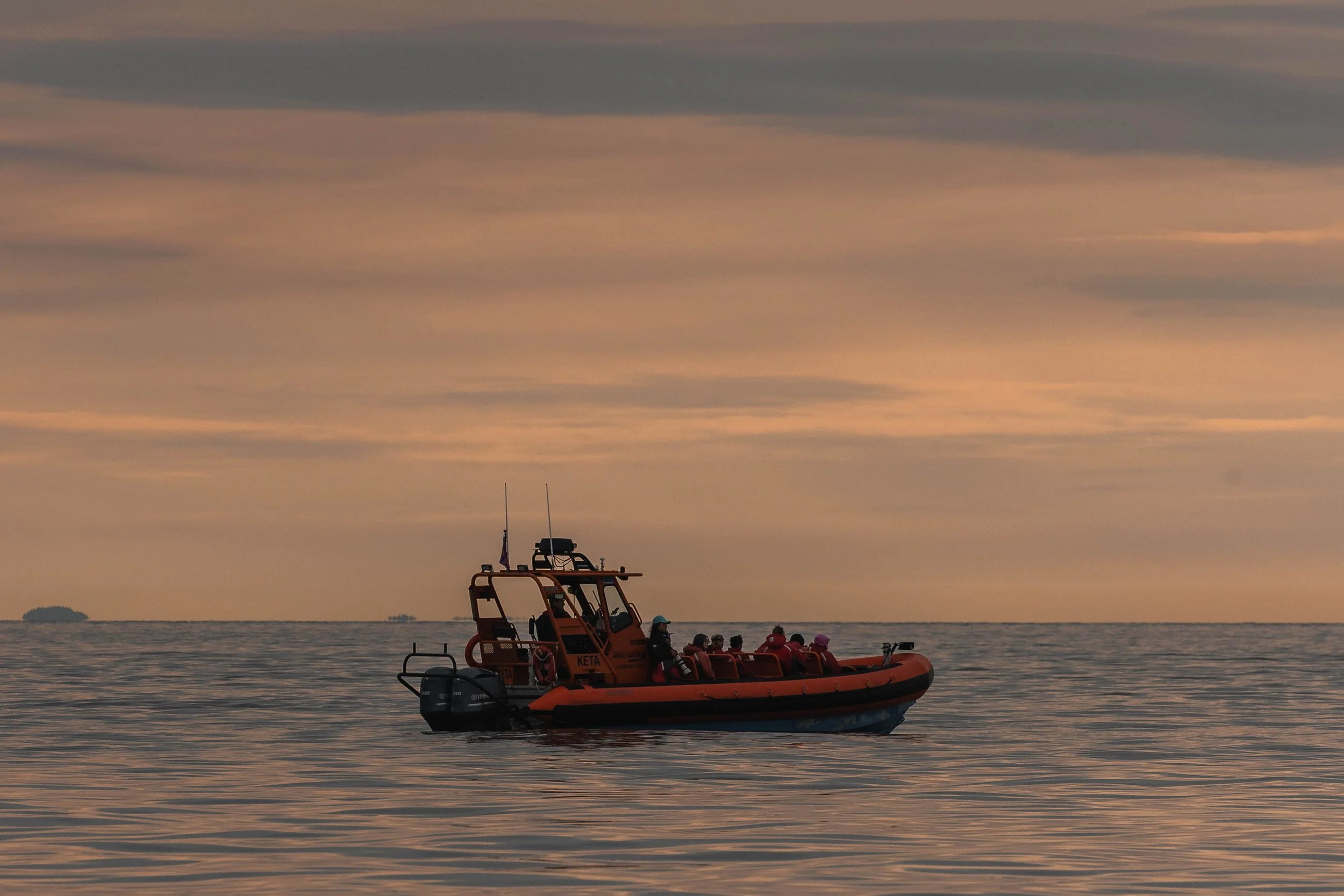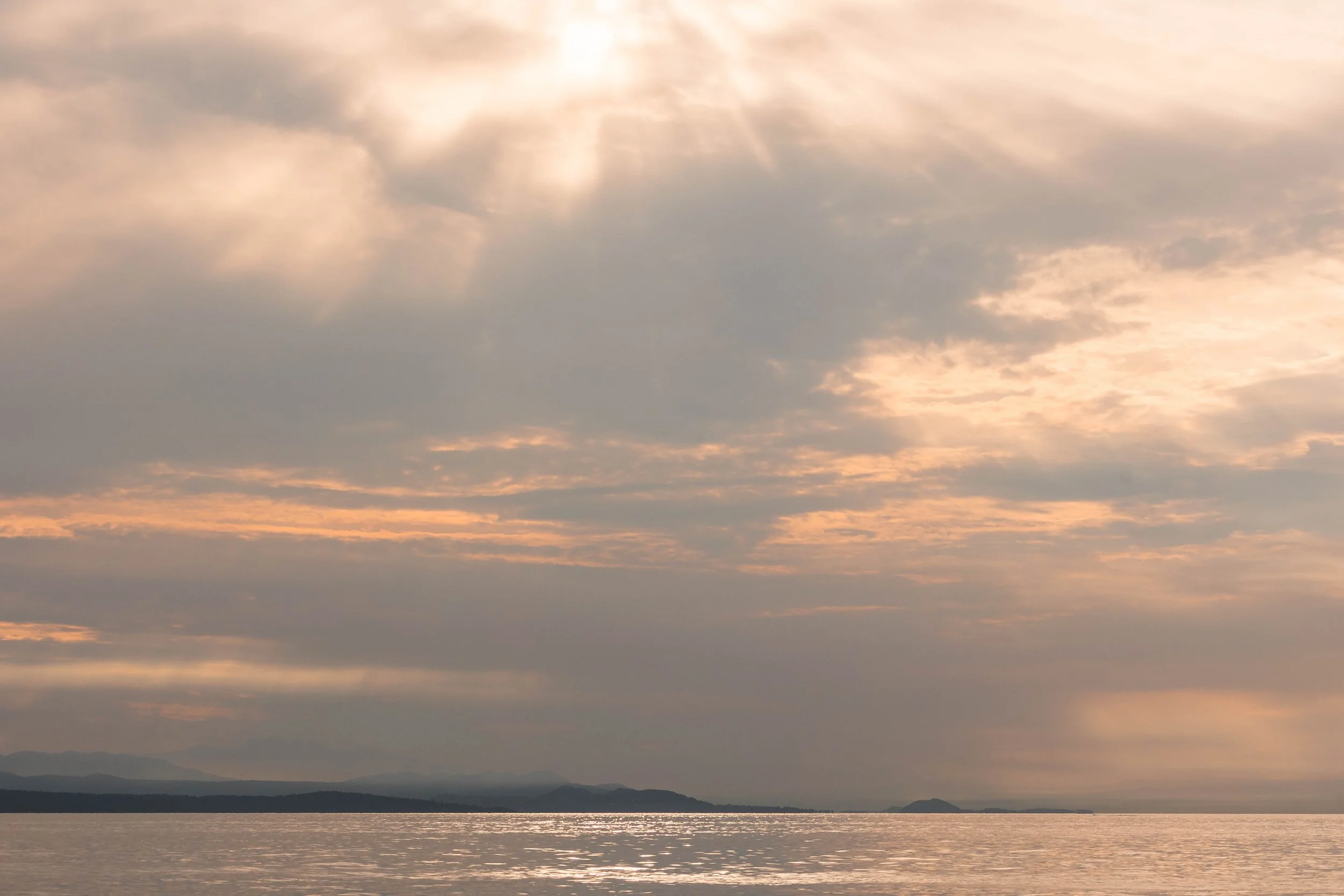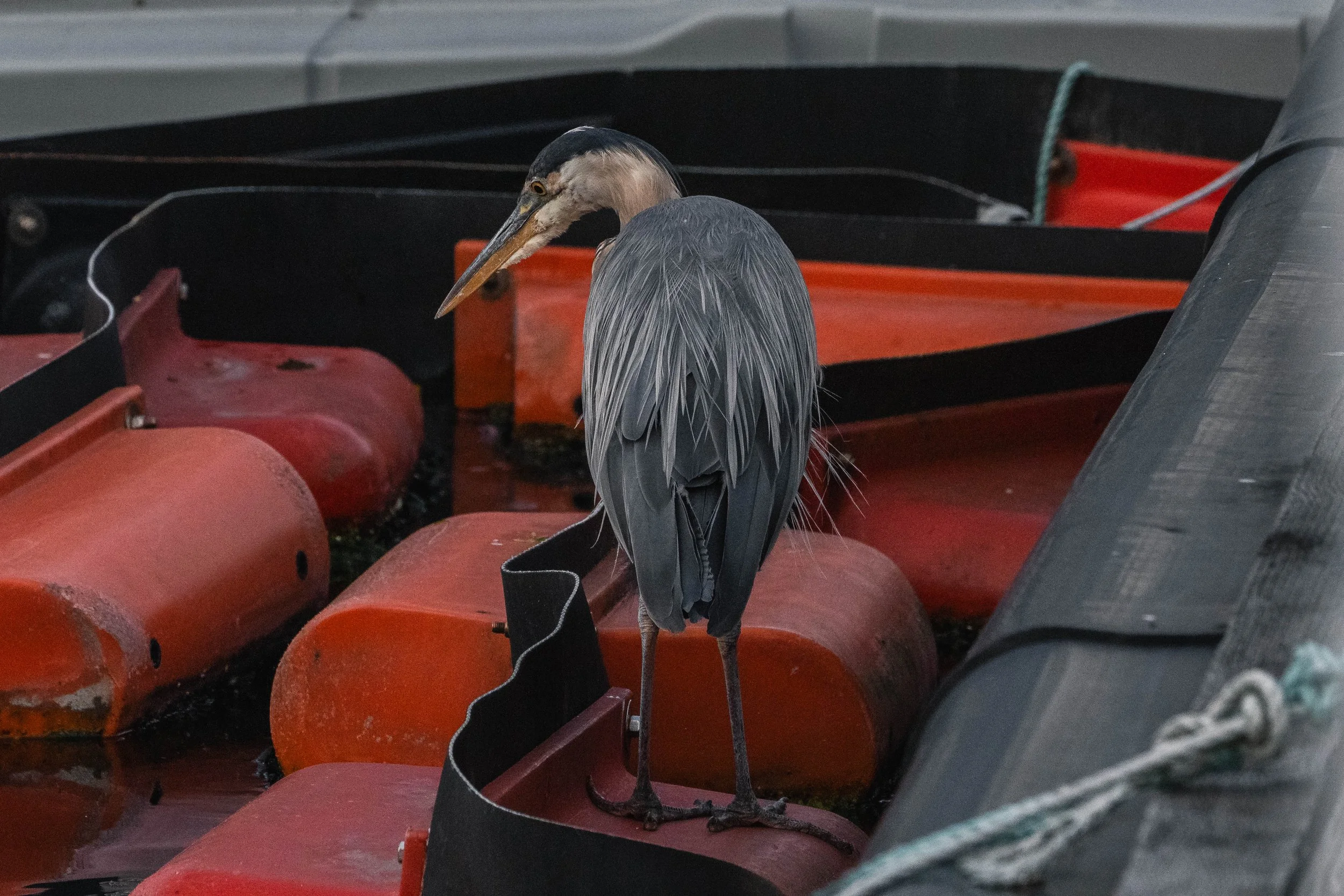August 8, 2025, 3:30 PM - Another Bowl of Humpback Soup
With near-perfect conditions forecasted out on the water, we were eager to start the second adventure of the day! The fleet spread out, scanning and scanning, travelling and exploring north of Nanaimo. Heading back over to the Gabriola Nursery, we had a feeling we might get lucky over there… and we sure were!
Our first encounter of the day was a trio of Humpbacks. These three were busily travelling together, diving and feeding away. After snapping some photos of their dorsal fin and flukes, we confirmed these three’s identities as Moresby (KEX0055), Bullet (BCX1658), and Hammer (BCY1222).
Hammer was a frequently sighted whale in our area back in 2021, but this is the first year we have seen them since then! In recent years, they have been spending their summers down around Victoria. This is very interesting, as their mother, Claw, tends to return to the feeding grounds off the Northeast tip of Vancouver Island. Generally, it was believed that humpbacks show a strong site fidelity to their natal feeding grounds, but we have seen this changing a bit in recent years. While it seems like a large portion of the population does follow this logic, we are seeing more and more instances of the whales appearing to choose different areas than their natal feeding grounds, and returning to them year after year instead.
Moresby is a descendant of Big Mama, one of the most famous humpbacks of our area. She was one of the first individuals to return to our area after their kind had been hunted to extirpation (local extinction). In the late 1990s, they began to return slowly, seemingly scoping the area out to see if it was safe. They then left to return to their breeding grounds before returning the following year. After that, calves were spotted in tow, and their population in the Pacific Northwest has grown exponentially ever since.
Not too long after finding our trio, even more blows were spotted a bit further off! We departed Morseby, Bullet, and Hammer to see what these new whales were up to. As we approached, two pairs of two were spotted, one a bit closer than the other. As they dove and fluked, it was noted that each pair had one large humpback and one small humpback present. This was because these were two mother-calf pairs! Our first pair was identified as Europa (BCX0854) and Europa’s calf (BCX0854calf2025). The nearby second pair was identified as Kappa (BCX0158) and Kappiroto (BCX0158calf2025). Europa’s calf seemed extra energetic and was spotted tail lobbing, or excitedly throwing the rear half of the body around out of the water. The other three were being a bit more reserved, quietly fluking and diving, likely heading down to the depths where their prey was lurking.
After watching the busy mothers with their kids, we once again left to continue the day’s excursion. The plan was to make our way along to search for pinnipeds; however, the whales had other ideas in mind. A little lone humpback was lunge feeding near Thrasher Rock! Lunge feeding is one of the incredible techniques humpbacks may use to fill their bellies. It involves the whale propelling themselves at high speed, mouth agape, through a large ball of prey. The whale will then quickly close its jaws, sealing them shut, trapping their prey inside with their baleen plates. After a couple of well-angled photos, we identified this whale as KEX0086. KEX0086 is a perfect example of natal site fidelity mentioned in this blog earlier. They are the 2022 calf of Kappa, one of the other whales seen on today’s trip! While KEX0086 was not directly interacting with Kappa and Kappiroto, their being in the same area is further solidifying the idea of the importance of natal feeding ground site fidelity.
While the open boats were with KEX0086, Kula found a final pair of humpbacks of their own. These two were once again travelling along, fluking and diving and likely feeding. After a few dives and elegant flukes, we confirmed this whale as Eros (BCX2201)! Eros is relatively new to our area, with our first sighting of them being in 2023. We are excited they are continuing to return to our area, and we hope to see them more in future seasons as well!
Besides Humpbacks, we also located several other denizens of the Salish Sea. Our Harbour Seals were precariously balancing on the very tips of the rocky outcroppings of Stinky Rocks, due to most of the rocks being covered by high tide. The ever-dramatic Steller Sea Lions were grumbling and wallowing in the shallows, occasionally hopping onto the stones to bicker at each other and fight for the best nap spots.
The day’s wildlife encounters didn’t end there, though, as we had one more little surprise for us back at the docks themselves! A lone Great Blue Heron was wandering the docks next to us, leading us to have a close-up of North America’s largest heron. Standing at an impressive 4.5” tall with a 6” wingspan, you’d think these birds would be rather hefty - but surprisingly, they usually only weigh 5-6 pounds, primarily due to their hollow bones!
Please enjoy these photos by Marine Naturalists Val Watson, Jordan Robinson, and Vanessa Vereschahen.
Entrance Island. Photo by Jordan Robinson.
Taking pics on Cascadia. Photo by Val Watson.
Hammer fluking. Photo by Vanessa Vereschahen.
Lunge feeding! Photo by Vanessa Vereschahen.
Moresby fluking. Photo by Val Watson.
Hammer diving in front of Moresby. Photo by Val Watson.
Hammer’s dorsal fin. Photo by Val Watson.
Europa followed by her calf. Photo by Val Watson.
Another big mouthfull! Photo by Val Watson.
Bullet going down. Photo by Jordan Robinson.
Moresby diving. Photo by Jordan Robinson.
A bushy blow and a fluke waterfall. Photo by Jordan Robinson.
A little roll at the surface. Photo by Jordan Robinson.
Europa’s calf. Photo by Jordan Robinson.
Europa fluking. Photo by Jordan Robinson.
A tiny cartwheel from Kappiroto. Photo by Jordan Robinson.
Keta and Cascadia watching the whales. Photo by Jordan Robinson.
Europa with her calf in tow. Photo by Jordan Robinson.
KEX0086 fluking. Photo by Jordan Robinson.
Eros’s fluke. Photo by Jordan Robinson.
Eros going for a dive. Photo by Jordan Robinson.
Plump harbour seals resting. Photo by Jordan Robinson.
Steller Sea Lions swimming past. Photo by Jordan Robinson.
Stellers fighting over the best spots. Photo by Val Watson.
A cuddle puddle. Photo by Jordan Robinson.
This can not be comfortable! Photo by Vanessa Vereschahen.
Keta in the glow of the setting sun. Photo by Jordan Robinson.
The setting sun over the water. Photo by Jordan Robinson.
Harold our local great blue heron. Photo by Val Watson.


